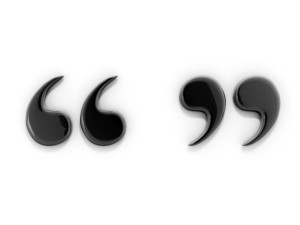How-Do-I-Wear-That Blogging for Business

A number of years ago, I touted a SELF Magazine article titled “How Do I Wear That?” as a good model for writers of blogs meant to market a product or service. Here’s why I thought so:
The article was written in question/answer format, first describing a “style dilemma”, then offering a “self-solution”. In other words, the article offered valuable information (in this case from fashion experts) which readers could use without having to buy anything. Nevertheless SELF’s style expert was very obviously there to sell stuff, because, under each self-solution, there appears a list of pants, dresses, shoes, and bags that were available for purchase – and in which stores.
The point I stressed was that we blog content writers need not apologize for connecting our content to actual solutions, so long a using the information we offer does not necessitate a purchase.
What made me think about that article now is that I just came across an entire blog called “How Do You Wear That?” by a Caitlyn Warakomski. The blog offers style advice for women and “hopefully a place for others to feel inspired”. Interesting – one of the things I liked so much about the SELF article was that the “solutions” are written in first person: “My buying tip: The more subtle the gradations in the color, the more real your fur looks.” Reading the piece, I felt the fashion director was talking just to me! This blog has the same very personal feel.
Warakomski offers information in the same way as the SELF article. In one June post, for example, she discusses three ways to wear a white dress – classic and casual, boho & funky, and girly and dressy. She offers advice about not wearing white to a wedding or bridal shower, and demos different accessories to change the look. There is a list of products and stores where those are available, but the advice and ideas are free for the reading.
Effective writing for business is very much a matter of tone. That very personal, conversational, “just between us” tone is exactly the one for which every blog content writer should be trying to incorporate in writing for business. And selling stuff by giving away valuable and actionable advice? That’s a good deal all around in blogging for business!


 How good an idea is it to use quotations in your business blog? Very good, once you allow for certain caveats. You can use a quote to:
How good an idea is it to use quotations in your business blog? Very good, once you allow for certain caveats. You can use a quote to:
Follow us online!